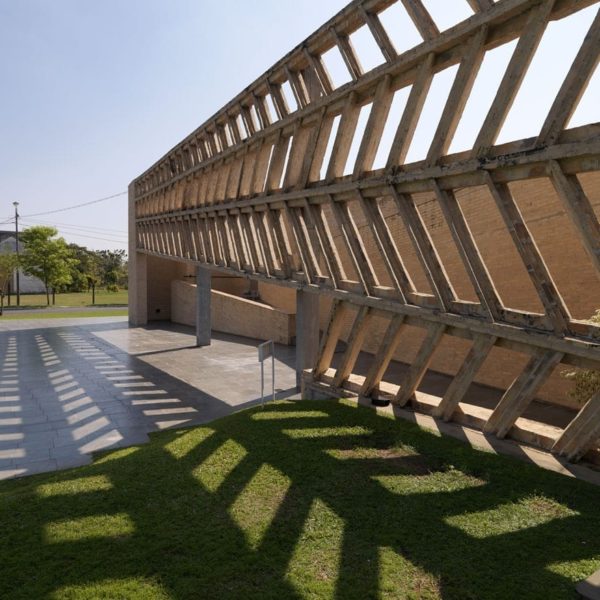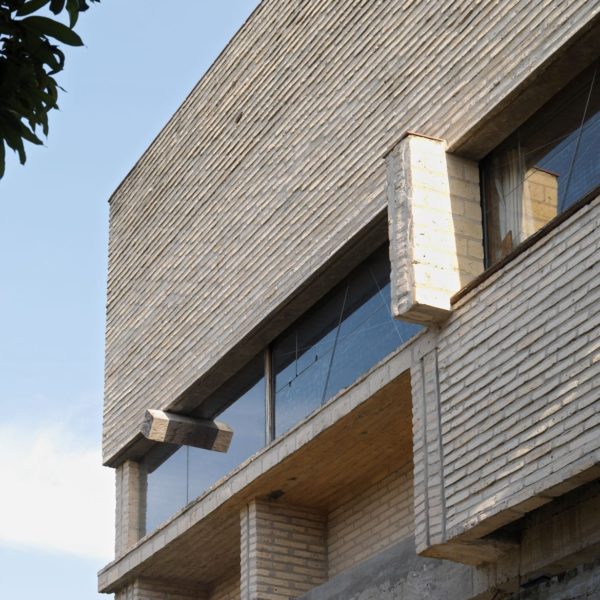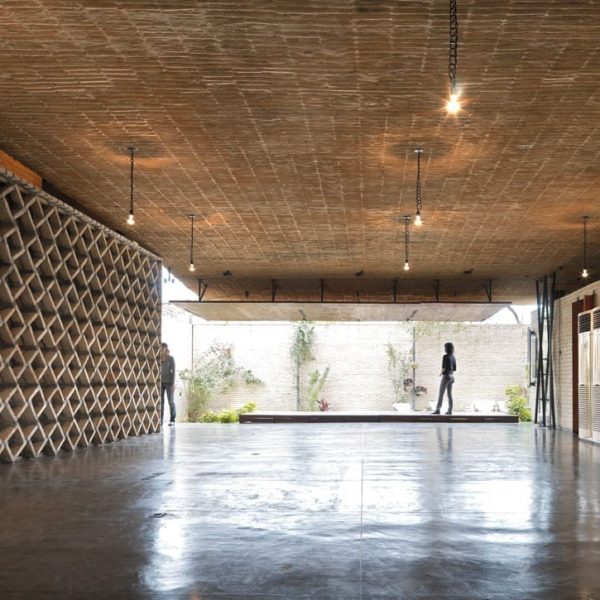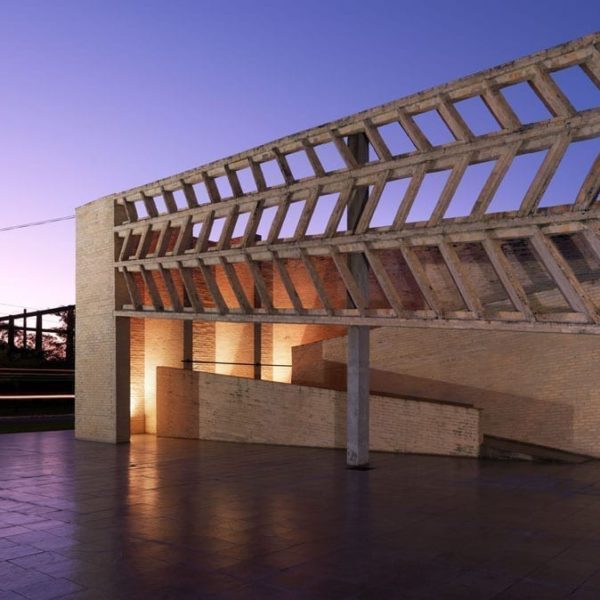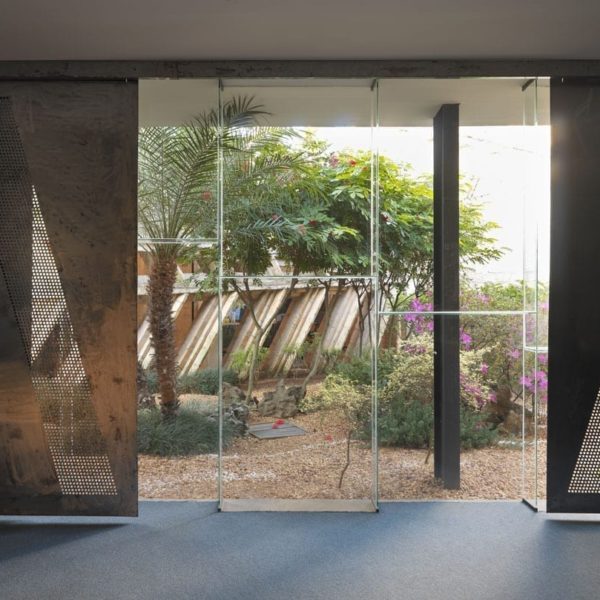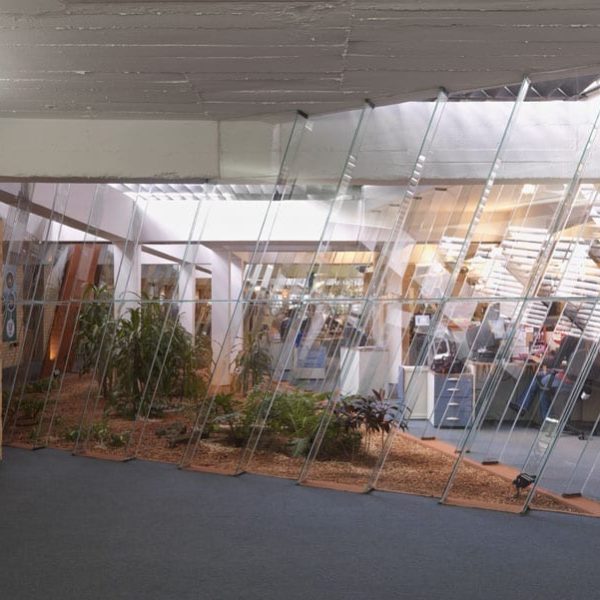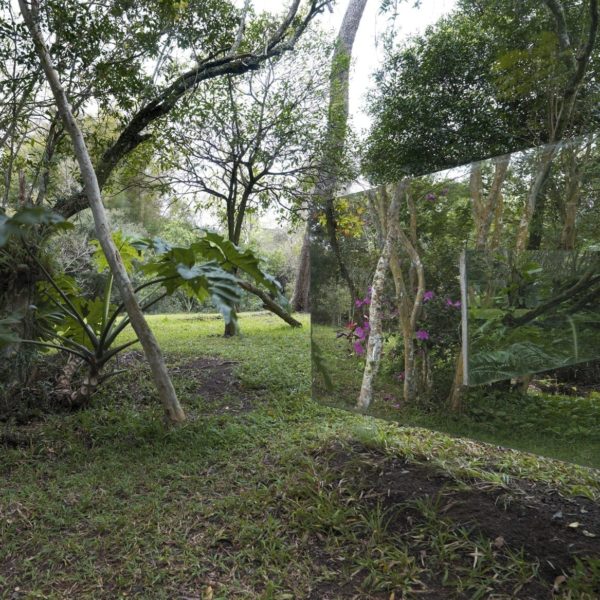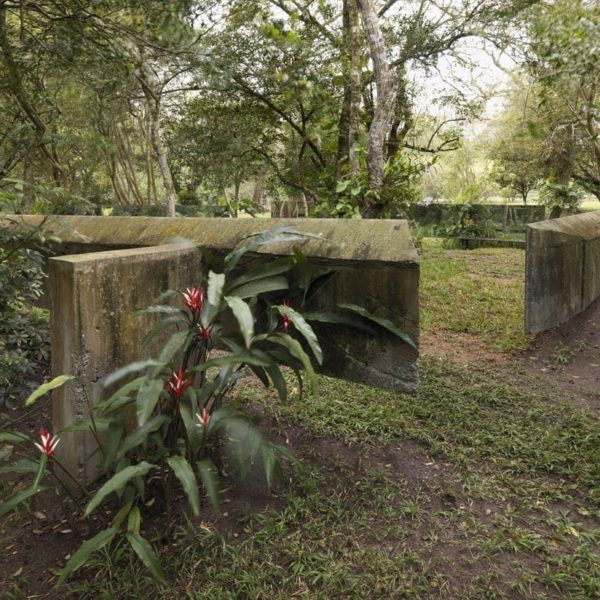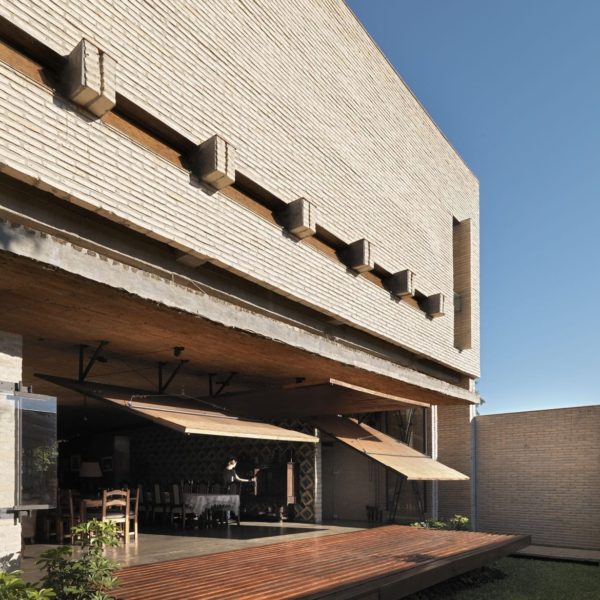Interviews

Giving voice to materials
The Asunción, Paraguay-based practice Gabinete de Arquitectura founded by Solano Benítez, Gloria Cabral and Solanito Benítez have pursued their architectural research in the difficult socio-political environment of their native country. Driven by necessity in a context far away from the processes of globalisation, this has given them a different viewpoint of the development and value of architecture.
They achieve astonishing aesthetic and technical results by using simple materials from the local building tradition, particularly the clay brick or “ladrillo”. By adopting an innovative language, they have developed new technologies rooted in their country’s sense of identity as a way of improving living standards.
Winner of the Golden Lion at last year’s Venice Biennale curated by Alejandro Aravena for a work that aimed to “bring architecture to excluded communities”, we met Solano Benítez at the conference he gave at Cersaie 2016.
In 2008 you were chosen as the winner of the BSI Swiss Architectural Award by a jury chaired by Mario Botta for the Unilever offices in Villa Elisa, Paraguay. Then in 2016 you received the Golden Lion at the Venice Biennale curated by Aravena, where you built a spectacular latticed arch with bricks and mortar. What are the strengths of these two projects?
The BSI award was actually a selection of three projects that recognised the continuity of our work. This reflects the fact that we always focus on the same things in our efforts to develop this process. We perfect our knowledge of techniques and materials through action. This is the essential condition that connects all of our works. Given Paraguay’s hot climate, it is vital to create shade. Doing this with traditional brick construction techniques would have been unfeasible. We therefore decided to develop a system of prefabricated clay panels using the ground and gravity as our allies. After making the panels, we developed a special installation technique for the Unilever offices project inspired by the construction of bridges in which each installed element forms the structural base for the next one.
By considering material as “matter”, we are able to imagine new forms based on our existing knowledge, new practices that offer novel solutions compared to traditional construction techniques. Examples include screens of clay panels prefabricated on the ground and mounted as sun shades, and roof tiles used as pavers to protect the waterproofing membrane of the roof and avoid overexposure to sunlight.
We are currently developing the idea of a “ceramic brick structure”, not as a structural plane but as a kind of “bar” that has not yet been associated with a specific project. It’s more of an idea than an architectural project. What we did in Venice was to create a curved brick bar structure with the smallest possible thickness. We didn’t think of it as a lightened arch but as a bar structure.
So you use form to give greater strength to materials?
That’s right. The absence of industrial architectural materials makes the use of brick essential in Paraguay. So I decided to explore brick in greater depth and investigate its properties.
In some cases I prefabricated panels in a counter-inductive way, simply by pouring mortar between the bricks laid on the ground. On other occasions I “folded” the bricks into a kind of self-supporting three-dimensional panel, or used bricks as the ribbing for handmade stereometric panels.
I think that all materials are “stupid” in the sense that if you pick up a stone or drop a brick they are “stupid”. But the human condition can transform this brick into a monument. The challenge is to understand that everything available to us is “material” which can be used to shelter human life and improve everyone’s standard of living.
Architecture “speaks” through materials, it communicates using ceramic and stone. We acquire knowledge through action. Our goal is to transform scarcity into abundance by working with the two most readily available elements: bricks and unskilled labour.
So architecture based on your “human” interpretation of technology can improve people’s lives?
Architecture is a tool for protecting life so in this respect architecture is a privileged form of work that brings us into contact with higher human values. I think that architecture is the sum of many other disciplines and that we have the capacity to bring together all areas of knowledge.
Your architectural projects derive from “limitations”. Your ability to achieve outstanding aesthetic qualities through imaginative use of technology is determined by constraints, by necessity, by the conditions that are inherent in every project, whether these are economic aspects, climatic situations or limitations of means and materials.
I don’t see the situation in South America as a limitation but as an opportunity. We can overcome our fear of constraints by interacting with matter and with other human beings. Intelligence is not limited to any geographical region, so we can develop a new condition even where adequate resources are lacking. Fear is the real limitation.
BIOGRAPHY
Born in Asunción in 1963, Solano Benítez graduated in architecture from the National University of Asunción in 1986 and founded Gabinete de Arquitectura in 1987. He distinguished himself in the field of contemporary architecture from an early age, winning a number of awards and accolades during his thirty-year career.
In 1999, Solano Benítez received an Outstanding Youth award from the Junior Chamber of Paraguay for contributions to national culture. This award was followed by many others, including in 2008 the BSI Swiss Architectural Award, an international recognition for architects under the age of fifty who have done significant work in the field of contemporary architecture. In 2011, Benítez won an honourable mention from the National Congress of Paraguay for his contribution to the nation. In 2011 he was elected Arquitecto del Bicentenario by the Paraguayan Architects’ Association and in 2012 became an honorary member of the American Institute of Architects.
Along with the Golden Lion in 2016, Gabinete de Arquitectura has won various awards, including in 1999 the Work of the Decade Award for the period 1989-1999 from the Paraguay College of Architects. The same year it was a finalist in the Mies van der Rohe award for Latin America and in 1994 represented Paraguay in the Venice Biennale, in the São Paulo biennial and in Lisbon during its stint as the Ibero-American Capital of Culture. Solano Benítez’s major works include: the Ytú tourist village in Paraguay (finalist in the Mies van der Rohe Award); the Piribebuy Grave (Paraguay), 2000-2001; the Unilever site in Villa Elisa (winning project in the BSI Swiss Architectural Award), 2000-2001; Casa Esmeraldina, in his native city of Asunción in 2002; Casa Fanego, also in Asunción, in 2003 with Sergio Fanego; Casa Abu & Font in Asunción, between 2005 and 2006; Casa Las Anitas in San Pedro, 2007-2008; the Teletón Children’s Rehabilitation Center in Asunción, 2008; Edificio Alambra in San Lorenzo, currently under construction.




